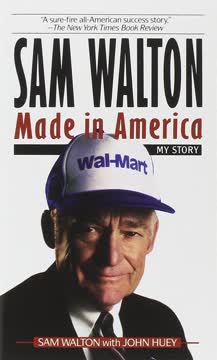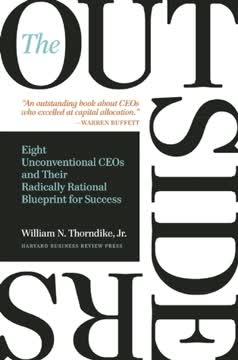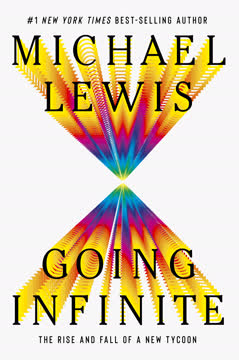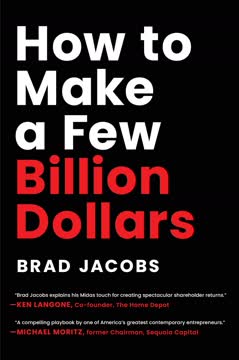نکات کلیدی
1. از مهاجر به امپراتوری میوه: ظهور سام زاموری
"شما آنجا هستید، ما اینجا؛ خودتان ببینید؛ به گزارش اعتماد نکنید."
آغاز humble. ساموئل زاموری در سال 1891 در سن 14 سالگی به آمریکا آمد، بیپول و بدون تسلط به زبان انگلیسی. او کار خود را در فروشگاه عمویش در سلما، آلاباما آغاز کرد، جایی که برای اولین بار با موز آشنا شد. با شناسایی پتانسیل این میوه، زاموری شروع به خرید و فروش موزهای بیش از حد رسیده کرد که سایر بازرگانان آنها را دور میانداختند.
روحیه کارآفرینی. موفقیت زاموری بر پایه تمایل او به ریسکپذیری و رویکرد عملیاش به کسبوکار بنا شده بود. او به طور گستردهای در آمریکای مرکزی سفر کرد و تجارت موز را از پایه آموخت. این دانش دست اول به او مزیت قابل توجهی نسبت به رقبایش داد.
ساخت امپراتوری. تا سال 1905، زاموری شرکت میوه کویامل را تأسیس کرد که در نهایت با شرکت قدرتمند میوههای متحد رقابت میکرد. شرکت او به سرعت رشد کرد و زمینهایی در هندوراس خرید و روشهای نوآورانه کشاورزی و حمل و نقل را توسعه داد. صعود زاموری از یک مهاجر فقیر به یک تاجر قدرتمند، نماد رویای آمریکایی است و فرصتهای موجود در اوایل قرن بیستم را برای کسانی که آماده کار سخت و ریسکپذیری بودند، نشان میدهد.
2. فرصتهای رسیده: رویکرد نوآورانه زاموری به تجارت موز
"یک الاغ بیشتر از یک معاون هزینه دارد."
دیدن ارزش در زباله. موفقیت اولیه زاموری از فروش "موزهای رسیده" به دست آمد - موزهایی که توسط سایر بازرگانان برای فروش بیش از حد رسیده تلقی میشدند. این رویکرد نوآورانه به او اجازه داد تا با حداقل سرمایه وارد بازار شود و کسبوکاری سودآور از آنچه دیگران زباله میدیدند، بسازد.
ادغام عمودی. با رشد کسبوکارش، زاموری استراتژی ادغام عمودی را پیادهسازی کرد و هر جنبهای از تجارت موز را کنترل کرد:
- خرید زمین در هندوراس برای مزارع
- ساخت راهآهن برای حمل موز
- خرید کشتیها برای حمل میوه به ایالات متحده
- توسعه شبکههای توزیع در شهرهای آمریکایی
دستکاری سیاسی. زاموری درک کرد که موفقیت در تجارت موز نیاز به بیشتر از فقط مهارتهای تجاری دارد. او به خوبی در navigating landscape سیاسی پیچیده آمریکای مرکزی عمل کرد و از نفوذ و منابع خود برای شکلدهی به سیاستهایی که به منافع تجاریاش کمک میکرد، استفاده کرد. این اغلب شامل روشهای مشکوک، مانند رشوه دادن به مقامات یا حمایت از کودتاها بود که بعداً به منبعی از جنجال تبدیل شد.
3. شرکت میوههای متحد: تولد یک غول چندملیتی
"ال پولپو" (هشتپا)
ادغام و رشد. در سال 1929، زاموری شرکت میوه کویامل را به قیمت 31.5 میلیون دلار به شرکت میوههای متحد فروخت و بزرگترین سهامدار شد. اما از مدیریت شرکت در دوران رکود بزرگ ناراضی بود و در سال 1933 یک تصاحب را سازماندهی کرد و بهطور مشهور به هیئت مدیره گفت: "شما آقایان مدت زیادی است که این کسبوکار را خراب کردهاید. من میخواهم آن را درست کنم."
گسترش و تسلط. تحت رهبری زاموری، شرکت میوههای متحد به یک شرکت چندملیتی واقعی تبدیل شد:
- کنترل زمینهای وسیع در سراسر آمریکای مرکزی
- مالک بزرگترین نیروی دریایی خصوصی در جهان (ناو بزرگ سفید)
- استخدام بیش از 100,000 کارگر
- تسلط بر تجارت جهانی موز
قدرت شرکتی. نفوذ شرکت میوههای متحد فراتر از تجارت موز بود. دسترسی این شرکت به سیاست، زیرساخت و زندگی روزمره در بسیاری از کشورهای آمریکای مرکزی منجر به ایجاد اصطلاح "جمهوری موز" شد که نشاندهنده درجهای است که اقتصاد و دولتهای این کشورها تحت کنترل شرکت میوه بودند.
4. قدرت و سیاست: نفوذ زاموری در آمریکای مرکزی
"به خاطر کریس، مشکل شما موز نیست، شما باید مشکل سیاسیتان را حل کنید."
شکلدهی به دولتها. زاموری راضی نبود که فقط در چارچوبهای سیاسی موجود عمل کند. او بهطور فعال برای شکلدهی به دولتها در آمریکای مرکزی به نفع منافع تجاریاش کار کرد. این شامل:
- حمایت از کودتاها در هندوراس (1911) و گواتمالا (1954)
- پرورش روابط با رهبران سیاسی
- لابیگری در دولت ایالات متحده برای مداخله در امور آمریکای مرکزی
تبلیغات و نفوذ. زاموری از پیشگام روابط عمومی، ادوارد برنایز، برای مدیریت تصویر شرکت میوههای متحد و تأثیرگذاری بر افکار عمومی استفاده کرد. برنایز کمپینهایی را سازماندهی کرد تا دولتهای آمریکای مرکزی را بهعنوان تهدیدهای کمونیستی معرفی کند و مداخله ایالات متحده را توجیه کند که به نفع شرکت میوههای متحد بود.
عواقب بلندمدت. در حالی که دستکاریهای سیاسی زاموری در کوتاهمدت به نفع شرکت میوههای متحد بود، تأثیرات منفی ماندگاری بر کشورهای آمریکای مرکزی داشت. بیثباتی و نابرابری اقتصادی که توسط این اقدامات ایجاد شد، به دههها ناآرامی سیاسی و توسعهنیافتگی در این منطقه کمک کرد.
5. جمهوری موز: تأثیر شرکت میوههای متحد بر هندوراس و گواتمالا
"یک نبرد در حال وقوع است و شما در یک طرف یا طرف دیگر هستید، حتی اگر ندانید."
تسلط اقتصادی. کنترل شرکت میوههای متحد بر اقتصادهای آمریکای مرکزی شگفتانگیز بود:
- مالک 70% از تمام زمینهای خصوصی در گواتمالا
- کنترل 75% از تمام تجارت در گواتمالا
- مالک بیشتر جادهها، ایستگاههای برق و زیرساختهای ارتباطی
تأثیر اجتماعی و سیاسی. تسلط این شرکت فراتر از اقتصاد بود و چشمانداز اجتماعی و سیاسی این کشورها را شکل داد:
- ایجاد یک جامعه دو سطحی: مدیران ثروتمند شرکت و کارگران محلی فقیر
- تأثیرگذاری بر سیاستهای دولتی برای حفظ شرایط تجاری مطلوب
- سرکوب جنبشهای کارگری و مخالفتهای سیاسی
مقاومت و واکنش. دهه 1950 شاهد افزایش مقاومت در برابر تسلط شرکت میوههای متحد بود که به انتخاب دولتهای اصلاحطلب در گواتمالا و هندوراس منجر شد. زمانی که این دولتها تلاش کردند تا اصلاحات اراضی و حمایتهای کارگری را اجرا کنند، شرکت میوههای متحد با حمایت زاموری، به تضعیف و سرنگونی آنها پرداخت که منجر به دههها بیثباتی سیاسی و درگیری شد.
6. نوآوری و سازگاری: رهبری زاموری در شرکت میوههای متحد
"شما دارو را روی برگها میزنید و این بیماری را درمان میکند؟"
نوآوریهای کشاورزی. تحت رهبری زاموری، شرکت میوههای متحد نوآوریهای متعددی را برای بهبود تولید موز پیادهسازی کرد:
- هرس انتخابی
- سیستمهای پیشرفته زهکشی
- آبیاری بالایی
- حمایت از گیاهان موز
مدیریت بیماری. زمانی که بیماری پاناما تهدیدی برای نابودی مزارع موز بود، زاموری دستور داد تا شرکت:
- انواع موز مقاوم به بیماری جدیدی توسعه دهد
- استراتژیهای چرخش محصول و زمینهای بایر را پیادهسازی کند
- در تحقیق و توسعه سرمایهگذاری کند
تنوع. در طول جنگ جهانی دوم، زمانی که حمل و نقل موز مختل شد، زاموری شرکت را به سمت محصولات گرمسیری دیگر سوق داد:
- کینین برای داروهای ضد مالاریا
- کنف برای تولید طناب
- لاستیک برای تلاشهای جنگی
این سازگاریها توانایی زاموری را در مواجهه با چالشها و یافتن فرصتهای جدید نشان داد و شرکت میوههای متحد را حتی در زمانهای دشوار سودآور نگه داشت.
7. میراث سام زاموری: پیروزی، جنجال و تأمل
"من بابت برخی از کارهایی که انجام دادیم احساس گناه میکنم. تنها چیزی که برای ما مهم بود، سود سهام بود. خوب، ما نمیتوانیم امروز به این روش کسبوکار کنیم."
موفقیت تجاری. کارنامه زاموری گواهی بر قدرت نوآوری، کار سخت و سازگاری در کسبوکار بود. او یکی از قدرتمندترین شرکتهای قرن بیستم را بنا نهاد و تجارت جهانی میوه را متحول کرد و ثروت شخصی عظیمی را انباشته کرد.
میراث جنجالی. با این حال، روشهای زاموری و تأثیر شرکت میوههای متحد بر آمریکای مرکزی همچنان عمیقاً جنجالی باقی مانده است:
- استثمار کارگران و منابع طبیعی
- مداخله در سیاستهای کشورهای مستقل
- کمک به بیثباتی اقتصادی و سیاسی بلندمدت در منطقه
خیریه و تأمل. در سالهای پایانی زندگیاش، زاموری در تلاشهای خیریه قابل توجهی شرکت کرد:
- کمکهای عمده به دانشگاه تولان
- حمایت از تحقیقات پزشکی و بیمارستانها
- تأمین مالی برای ایجاد دولت اسرائیل
او همچنین بابت برخی از اقدامات گذشتهاش ابراز پشیمانی کرد و تأثیرات منفی شیوههای تجاریاش را شناسایی کرد. داستان زندگی زاموری همزمان نمایانگر فرصتها و چالشهای اخلاقی سرمایهداری آمریکایی در اوایل قرن بیستم است و بهعنوان یک مطالعه موردی پیچیده از کارآفرینی، قدرت و مسئولیت عمل میکند.
آخرین بهروزرسانی::
FAQ
What's The Fish That Ate the Whale about?
- Biography of Sam Zemurray: The book chronicles the life of Samuel Zemurray, a Russian immigrant who became a powerful figure in the banana trade and the president of the United Fruit Company.
- American Century Context: Zemurray's story is set against the backdrop of the American Century, illustrating the complexities of American expansionism, corporate power, and the impact on Central America.
- Themes of Power and Corruption: The narrative explores themes of ambition, corruption, and the moral ambiguities of capitalism, particularly in the context of foreign interventions and corporate influence in politics.
Why should I read The Fish That Ate the Whale?
- Insight into Corporate History: The book provides a detailed look at the banana industry and the rise of multinational corporations, offering insights into how business practices shaped modern economies.
- Engaging Storytelling: Rich Cohen's narrative style combines historical facts with vivid storytelling, making it an engaging read for those interested in history, business, or personal stories of ambition.
- Lessons on American Exceptionalism: The book serves as a case study on American exceptionalism, illustrating both the opportunities and the darker sides of pursuing the American Dream.
What are the key takeaways of The Fish That Ate the Whale?
- Power is Perception: The book emphasizes that "Power is based on perception. If you think you got it, you got it, even if you don’t got it," highlighting the importance of self-image in business and politics.
- The American Dream's Complexity: Zemurray's life illustrates the duality of the American Dream—success achieved through hard work and ambition, but often at the expense of ethical considerations and the well-being of others.
- Impact of Corporate Influence: The narrative reveals how corporate interests can shape foreign policy and local governance, as seen in Zemurray's dealings with the Honduran government.
What are the best quotes from The Fish That Ate the Whale and what do they mean?
- "In my beginning is my end.": This quote reflects the cyclical nature of Zemurray's life, suggesting that his humble beginnings were intrinsically linked to his eventual downfall and the complexities of his legacy.
- "There’s always a guy.": This phrase captures the essence of the unpredictable nature of business and politics, indicating that there is always someone ready to take advantage of a situation, for better or worse.
- “You gentlemen have been fucking up this business long enough. I’m going to straighten it out.”: This quote captures Zemurray's determination and assertiveness in reclaiming control over United Fruit, reflecting his belief in his ability to effect change.
How did Sam Zemurray rise to power in the banana industry?
- Started with Ripes: Zemurray began his career by selling "ripes," or overripe bananas that others discarded, demonstrating his ability to see value where others did not.
- Acquisition of Land: He strategically acquired land in Honduras, leveraging his knowledge of the banana trade and local politics to build a successful plantation business.
- Coup and Influence: Zemurray orchestrated a coup to install a friendly government in Honduras, which allowed him to secure favorable concessions and expand his business operations.
What role did United Fruit Company play in Zemurray's story?
- Corporate Rivalry: United Fruit was both a competitor and a partner for Zemurray, representing the larger corporate interests in the banana trade that he sought to challenge and eventually merge with.
- Symbol of American Imperialism: The company is depicted as a symbol of American imperialism, using its power to influence foreign governments and exploit local resources, which Zemurray both benefited from and fought against.
- Merger Outcome: Ultimately, Zemurray's merger with United Fruit allowed him to secure his legacy and financial future, but it also meant he had to navigate the complexities of corporate governance and ethics.
How did Zemurray's actions affect Central America?
- Political Interventions: Zemurray's influence led to significant political interventions in countries like Honduras and Guatemala, where he supported coups to protect United Fruit's interests.
- Economic Exploitation: The practices of United Fruit under Zemurray's leadership often exploited local labor and resources, leading to economic disparities.
- Cultural Impact: The actions of United Fruit contributed to the perception of the U.S. as an imperial power in Latin America, shaping cultural narratives around American intervention.
What were the consequences of Zemurray's actions in Honduras?
- Political Instability: Zemurray's involvement in the coup against President Dávila contributed to ongoing political instability in Honduras, as foreign interests often clashed with local governance.
- Corporate Power Dynamics: His actions exemplified the power dynamics between multinational corporations and sovereign nations, raising questions about sovereignty and the ethics of intervention.
- Legacy of Exploitation: While Zemurray achieved personal success, his story also reflects the broader legacy of exploitation and the impact of corporate greed on local populations.
How did Zemurray's background influence his business practices?
- Immigrant Experience: Zemurray's experience as an immigrant shaped his understanding of opportunity and risk, driving him to work tirelessly to achieve success in a foreign land.
- Connection to the Land: Growing up on a farm instilled in him a deep appreciation for agriculture, which informed his innovative practices in banana cultivation and plantation management.
- Cultural Adaptation: His ability to adapt to local cultures and languages allowed him to build strong relationships with workers and local leaders, which was crucial for his business success.
How did The Fish That Ate the Whale address the theme of colonialism?
- Corporate Colonialism: The book illustrates how United Fruit operated as a colonial power in Central America, exerting control over land and labor.
- Cultural Imperialism: Cohen discusses the cultural implications of United Fruit's dominance, including the imposition of American values and practices on local populations.
- Resistance and Revolution: The narrative highlights the resistance movements that emerged in response to corporate colonialism, showcasing the struggles of local populations against foreign domination.
What lessons can be learned from The Fish That Ate the Whale?
- Importance of Ethical Business Practices: The book serves as a reminder of the need for ethical considerations in business decisions.
- Understanding Historical Context: Readers are encouraged to consider the historical context of corporate actions and their impacts on communities.
- The Power of Individual Agency: The narrative emphasizes the role of individuals in shaping history, encouraging readers to recognize their own potential for impact.
How does The Fish That Ate the Whale relate to contemporary issues?
- Corporate Influence in Politics: The book raises questions about the ongoing influence of corporations in political decision-making, particularly in foreign policy.
- Globalization and Exploitation: Zemurray's story reflects the challenges of globalization, including the exploitation of labor and resources in developing countries.
- Legacy of Interventionism: The narrative serves as a historical lens through which to view contemporary U.S. foreign policy in Latin America and beyond.
نقد و بررسی
کتاب ماهی که نهنگ را خورد داستان جذاب ساموئل زمرای، یک مهاجر روسی که به "سلطان موز" آمریکا تبدیل شد، را روایت میکند. خوانندگان از سبک نوشتاری جذاب کوهن و بررسی تأثیر شرکت میوههای متحده بر سیاستهای آمریکای مرکزی تمجید میکنند. برخی به انحرافات نویسنده و گاهی عدم بیطرفی او انتقاد کردهاند. بسیاری زمینه تاریخی و صعود زمرای به قدرت را جذاب یافتهاند، هرچند نظرات در مورد کارایی کلی کتاب متفاوت بود. در حالی که برخی احساس کردند کتاب بیش از حد طولانی یا پراکنده است، دیگران عمق تحقیق و روایت جذاب آن را مورد تحسین قرار دادند.
Similar Books














